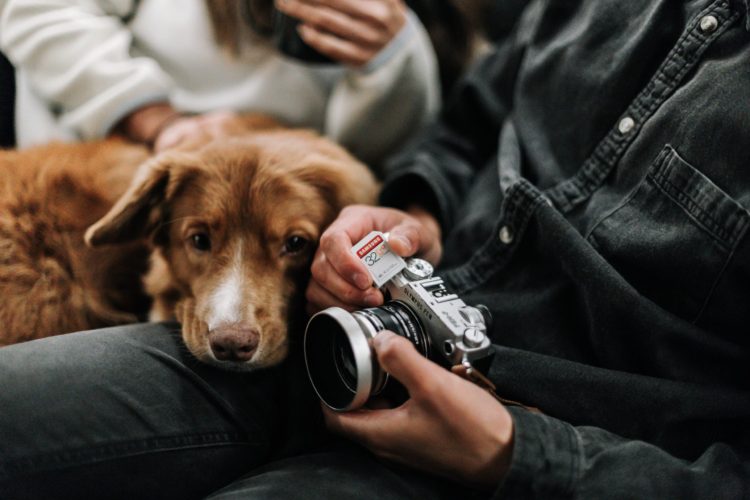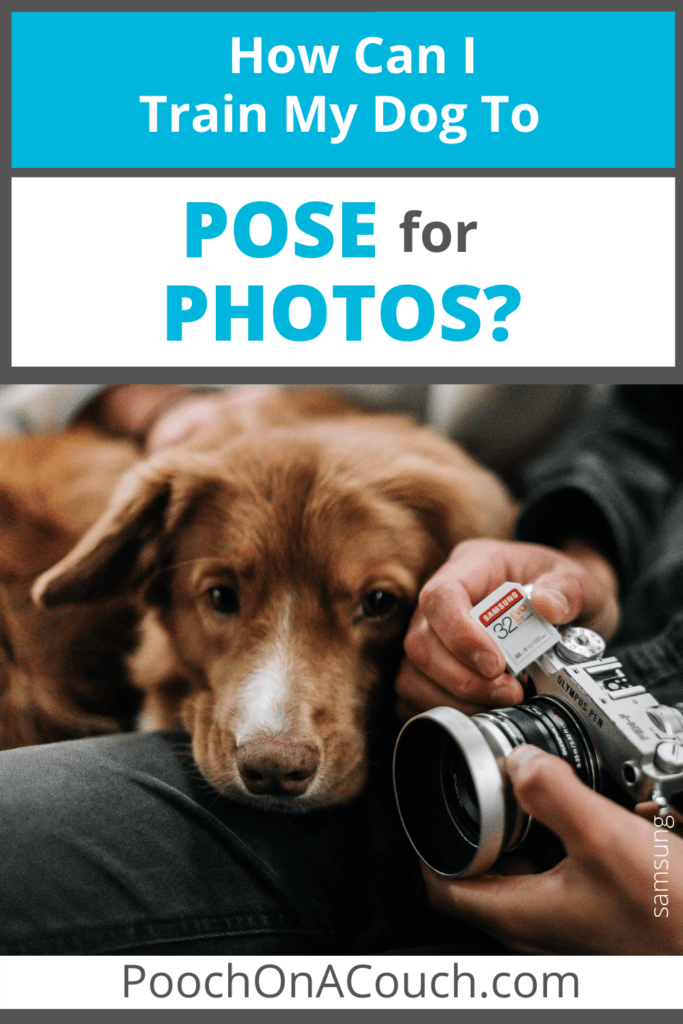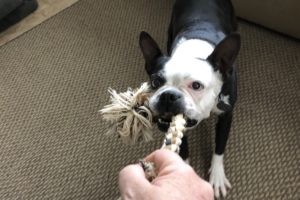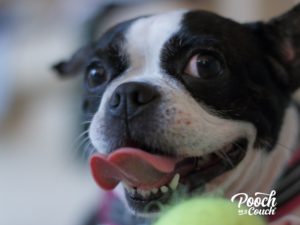Beautiful pictures are a powerful tool when promoting your foster dog in an effort to get them adopted. A foster dog afraid of the camera makes creating adorable pictures near impossible. Are you struggling with a foster dog that hates having its picture taken?
My Foster Dog Doesn’t Like Looking At My Phone or Camera
I have a dog that doesn’t like looking at my phone or camera. Every time I point my camera at him, he turns his head. If I bring out treats, he gets so excited about food that I can’t get him to focus or hold a pose.
I have passed dogs that would look at the camera, but would do something like squint their eyes closed. Even after learning the “watch me” cue, I have more photos of squinty-eyed Derby than I have of her with her beautiful eyes open.
My Foster Dog Hides When It Sees My Camera
Some of you may have had (or currently have) a foster dog that hides when you bring out the camera. They run under the bed or leave the room or may even growl at it!
How are you supposed to get social-media-worthy photos of a dog that runs from the camera?
Why Are Some Dogs Afraid Of The Camera?
Some dogs are more fearful by nature, either because of genetics, early up-bringing, or both. This is especially true of many dogs that find themselves in shelters or rescue organizations. While we can’t be sure, I think it’s a safe bet to assume that many “rescue” dogs have never seen a camera or heard the “click” of the shutter.
One person surmised that a SLR camera has a center lens that looks like a giant eyeball. That’s an interesting thought I shall ponder.
Do Dogs Really Hate Having Their Picture Taken?
Hate is a poor choice of words.
I recently realized that Otis doesn’t like having his picture taken because it’s not pleasant for him. It’s work. He’d rather be doing other things more fun or relaxing. Even though I “pay” him in treats, I’ve realized that there’s a gap in my training method where I still have not taught him what I want him to do when I start taking photos. All he knows is that I have a pocket full of treats. While he knows “sit”, “down”, and “watch me”, he doesn’t really have a handle on being relaxed in the presence of food. He gets really excited and therefore can’t hold a pose.
My point is, if the photography session is not pleasant, your dog may stop participating. If they don’t know what you want them to do, they may act like they hate the camera when in fact, they are just confused, overwhelmed, or even bored.
Help For Your Camera-Shy Dog
You can get good photos of dogs that are afraid of cameras. It takes some preparation, some thought, a pocket full of the best-treats-on-the-planet, and a lot of patience packed in that other pocket.
Tackle Your Foster Dog’s Fear Of the Camera, One Part At A Time
If your foster dog is afraid of the camera, exactly what are they afraid of? If you don’t know the exact source of the fear, it takes longer to counter-condition it.
As I think about all the ways a dog might be afraid of the camera, I came up with these fear categories
- Parts
- Sounds
- Location
Location of the camera
Is your dog afraid of the camera itself? Or just when you point it at them?
Test it out. Bring out your camera and set it on a table. What does your dog do? Do they do something different when you pick it up?
Hand treats to your dog every time you bring out the camera. Put it on a table. Treat. Treat. Treat. Treat. Move it to another table. Treat. Treat. Treat. Treat. Put it away. Stop treats.
Repeat that a lot over the course of the next few days. Try to get close to 50 repetitions.
Do this same method for holding the camera in your lap, hands, or wearing it for a minute or so. Treat. Treat. Treat. Treat. Put the camera away, stop the treats.
Bring the camera up to your chin. To your nose. In front of your eyes. What is your dog doing? Treat. Treat. Treat. Treat.
If your dog seems fearful or runs to hide, take a step back. You are going too fast.
Sounds
Truth: our cameras or mobile phones may make noises that we don’t hear. We know the camera’s shutter makes noise, but what other sounds emit from our digital cameras or cell phones?
If your foster dog acts afraid of the sounds your camera makes, you can counter-condition the dog to the sound of the shutter. Sit on your sofa with your camera of choice. Click the shutter. Treat. Click the shutter again. Treat. Don’t point the camera to the dog, yet. Just make the sound and treat.
You are teaching the dog that every time the camera makes sounds, good things (treats) happen.
Parts
What if your camera has more than one lens and you use them all when taking pictures of your dog? A longer or shorter lens will change the overall shape of your digital camera and to a dog, that camera can look like a whole different object.
Same is true for adding a selfie-stick or ball-holding attachment to your cell phone.
If you change the shape or add attachments to your picture-taking equipment, and that causes a fear reaction in your foster dog, take a step back and counter-condition your dog to those parts.
Can I Train My Foster Dog To Pose For The Camera?
Yes, you can train your dog to pose for the camera! All you need is a camera, some high-value treats, and some patience. Lots of treats. Lots of patience.
Oh. I forgot the most important thing: You need to decide the one thing you want your dog to do.
One thing. Just one thing at a time.
If you want your dog to stand still on that bench and look at you for 5 seconds while you take 15 shots, you may be asking too much. You can work up to that, but you need to break that “pose” up into mini-steps.
Teaching “Place” To Improve Photo-Shoot Success
Otis already knows “place” or “on your bed.” Now I can ask him to do this without giving him any food rewards which is nice, and was my goal. I’ve even been able to build on “place” “come” and “touch” to create a game of playing tag with my dog. It’s really fun.
What I haven’t done is use “place” during photo shoots with Otis. Duh.
It’s a V8 moment over here.
We assume our dogs have generalization skills. They often don’t, and we have to help them practice their learned behaviors in different environments to help “proof the training.“
I plan to start using place with Otis and photo shoots. I have zero expectations that any of these first photos will be useable. We just need to practice the association of the behavior “place” and the camera pointing at him.
Later, I can add “watch me” and “sit” in separate training seshes to get all of the behaviors together. He knows all of those behaviors. What he doesn’t know is those behaviors associated with the camera and photo shoots.
In other words, I have to help Otis and you have to help your foster dog change from thinking, “Oh no!!” when the camera comes out and instead thinking, “yippee! It’s photo time!”
Popular Posts


 />
/> />
/>

